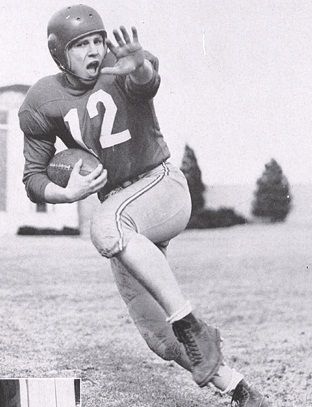Is the solution to make football helmets even more impervious? Owen Edwards of The Design Observatory Group argues for the opposite approach: make helmets less impact resistant by removing the face masks that emerged in the 1960s.
His argument is that armoring football players has made them less cautious about ramming into other players—or being rammed. A player with a less protective helmet has to be more careful about what he’s doing with his head. Edwards writes about his own football experiences and how they were different from those of modern players because his gear was less protective:
In the final two years of my otherwise forgettable football career, before switching to lacrosse in college, I and my teammates considered shockingly sissified the first appearances of single, transparent bands of Lucite on the helmets of a few players with expensive orthodontia work. Real men, we figured, did not worry about the chance of a broken nose or a few lost teeth. But of course we did worry, perhaps wrongly imagining that our faces were our fortunes. So nobody ever dove into a tackle head first. Instead, we were taught to tackle with our shoulder pads, and practiced the technique for hours on tackling dummies. Our helmets were far from the state of today’s art, but I don’t remember more than a few, very rare concussions. Better yet, I can still remember almost everything else about those days…a good sign, I think.
If high school, college and professional football teams could forge a kind of anti-missile treaty, facemasks could be gone by the start of spring training. Mouthpieces can do a pretty good job of protecting players’ teeth, and a return to shoulder tackling will keep noses unbroken. And, of course, there will be no more of those penalties for those nasty facemask takedowns.


No comments:
Post a Comment